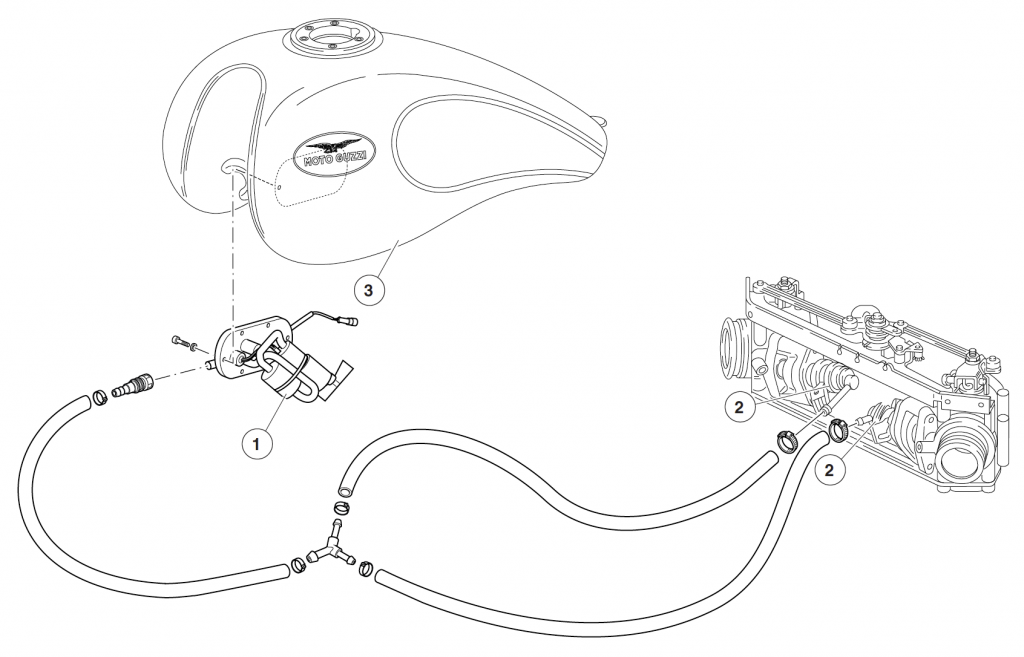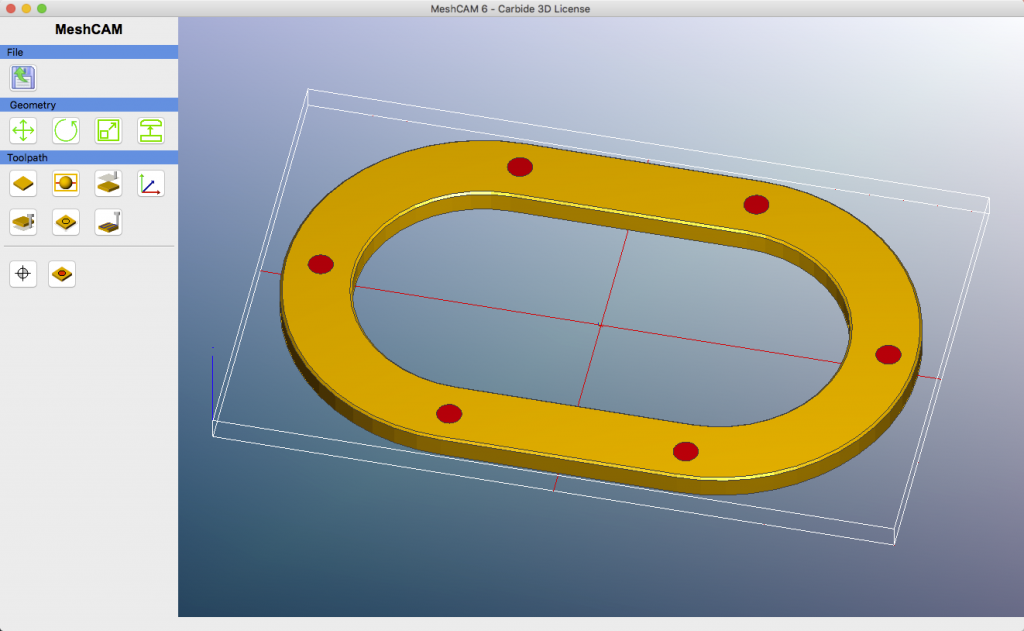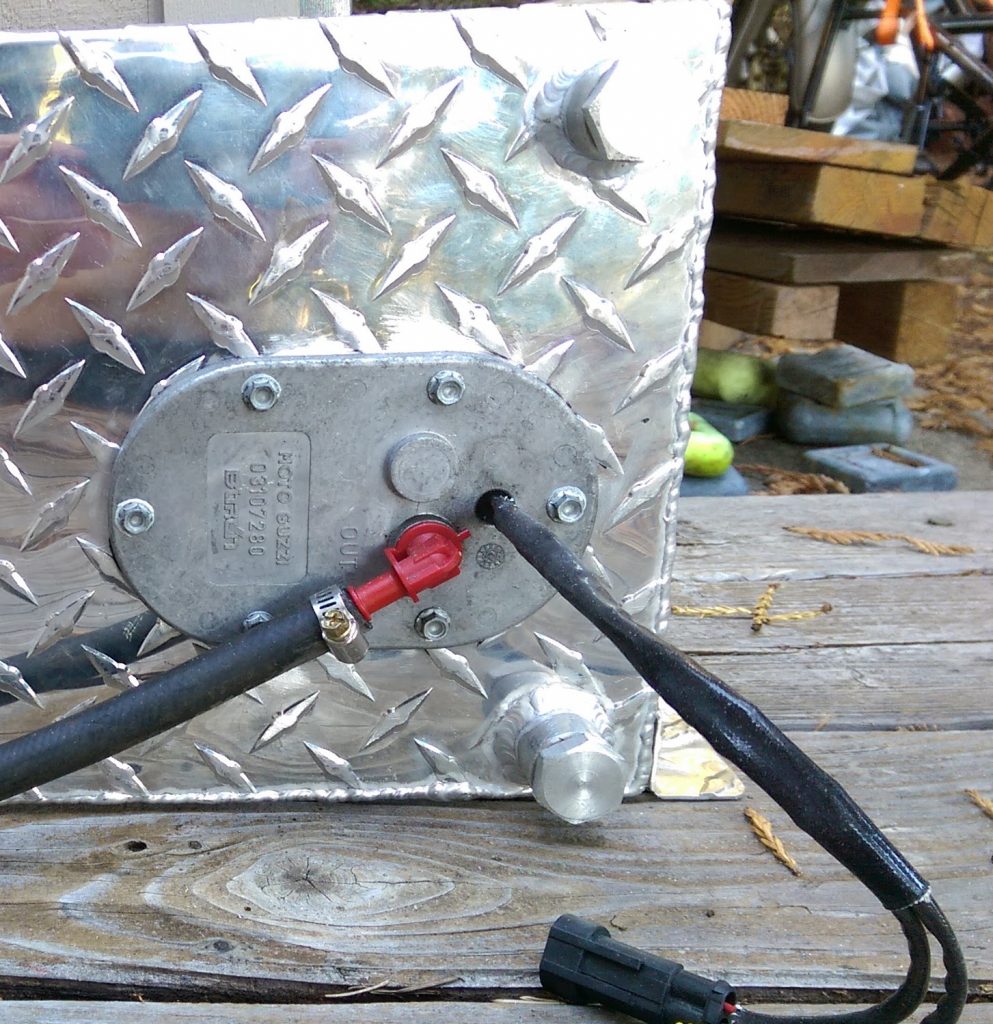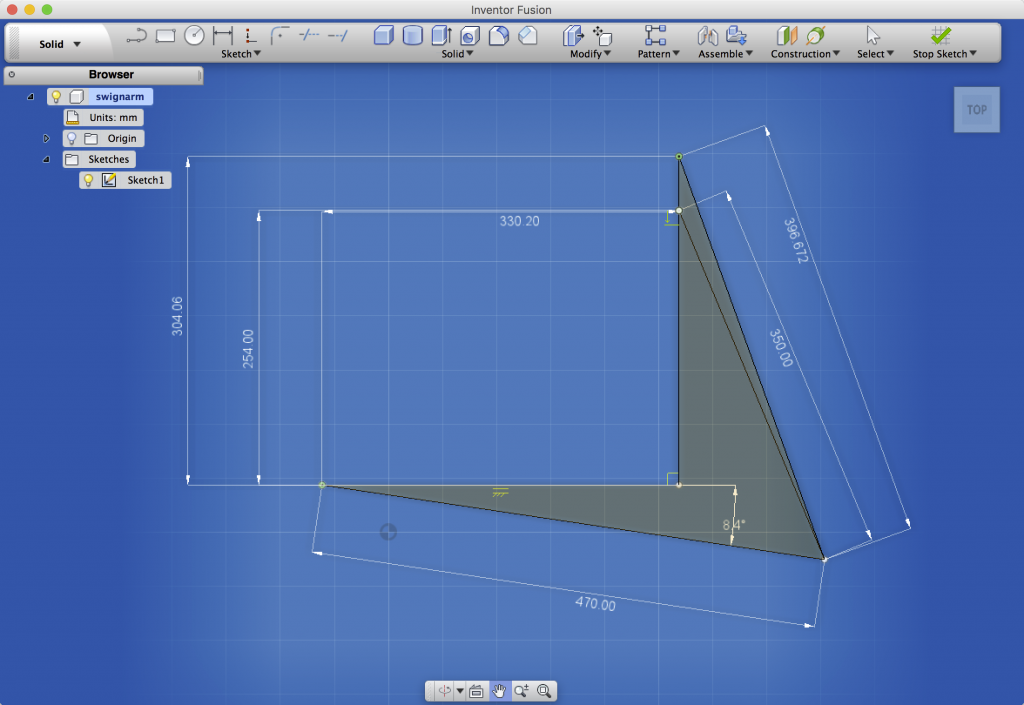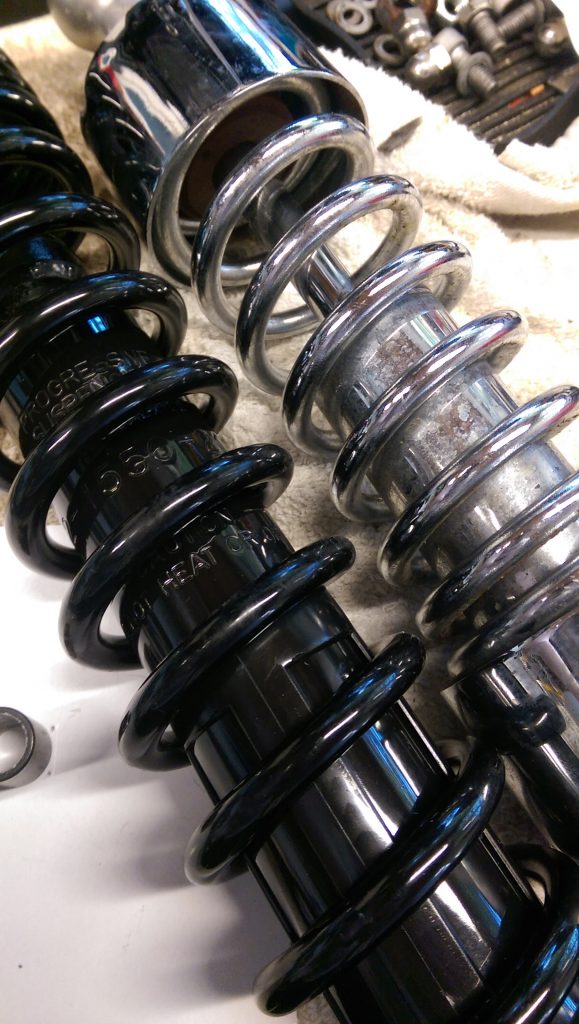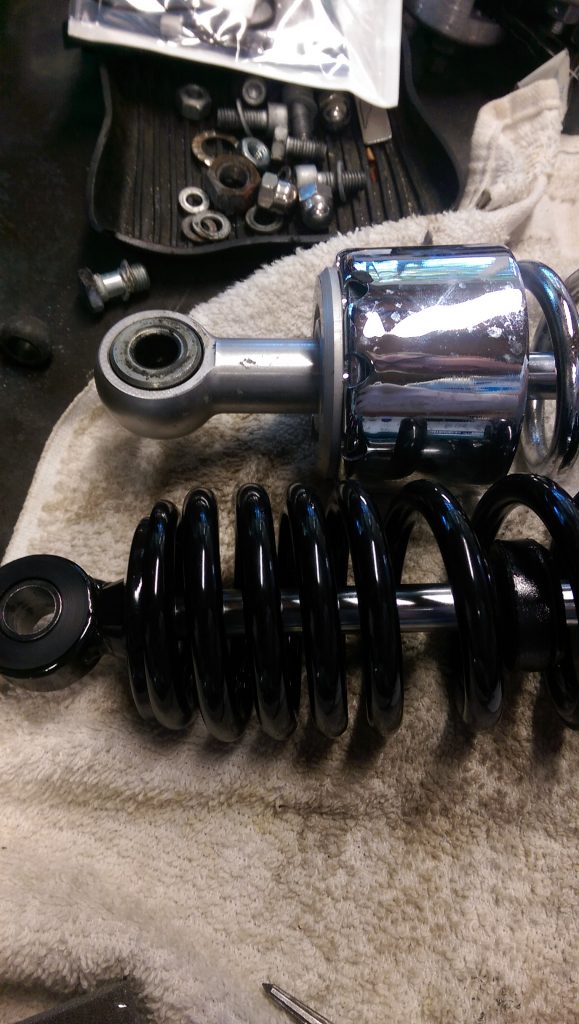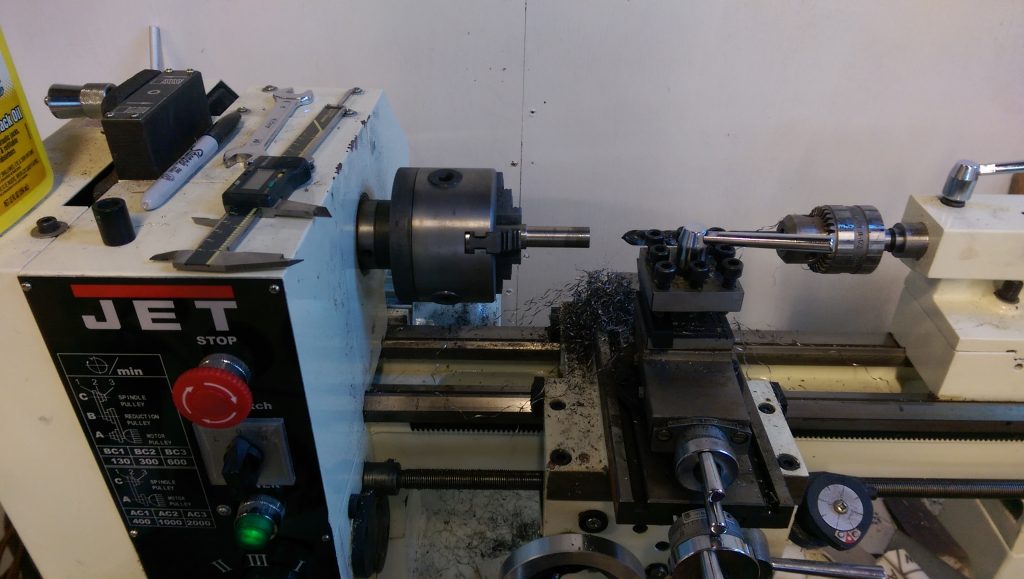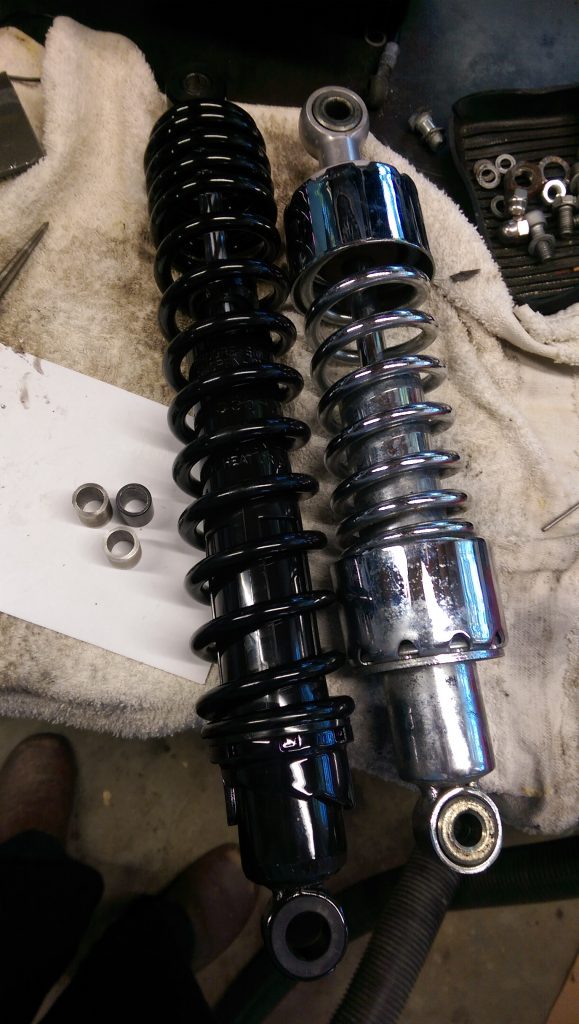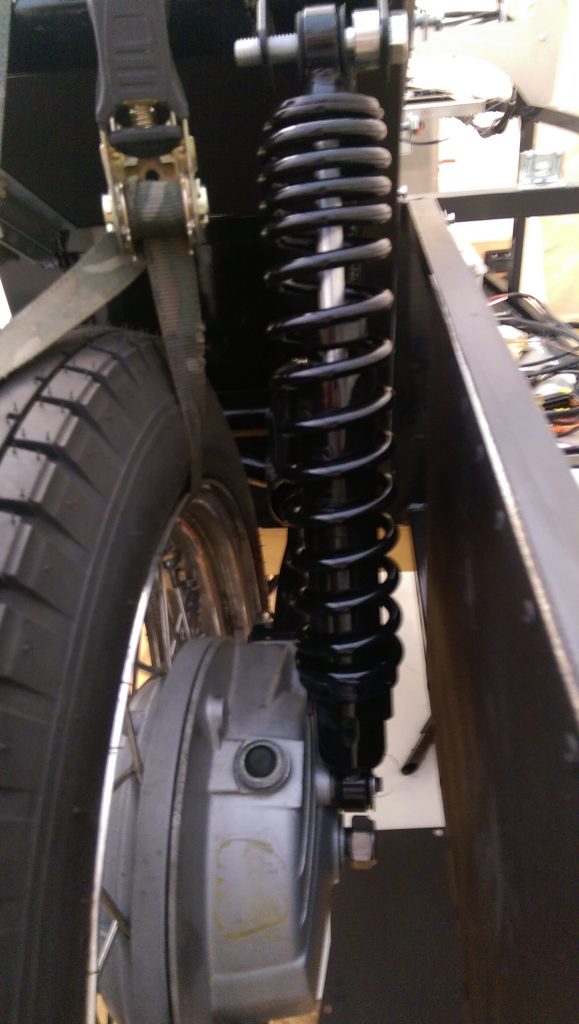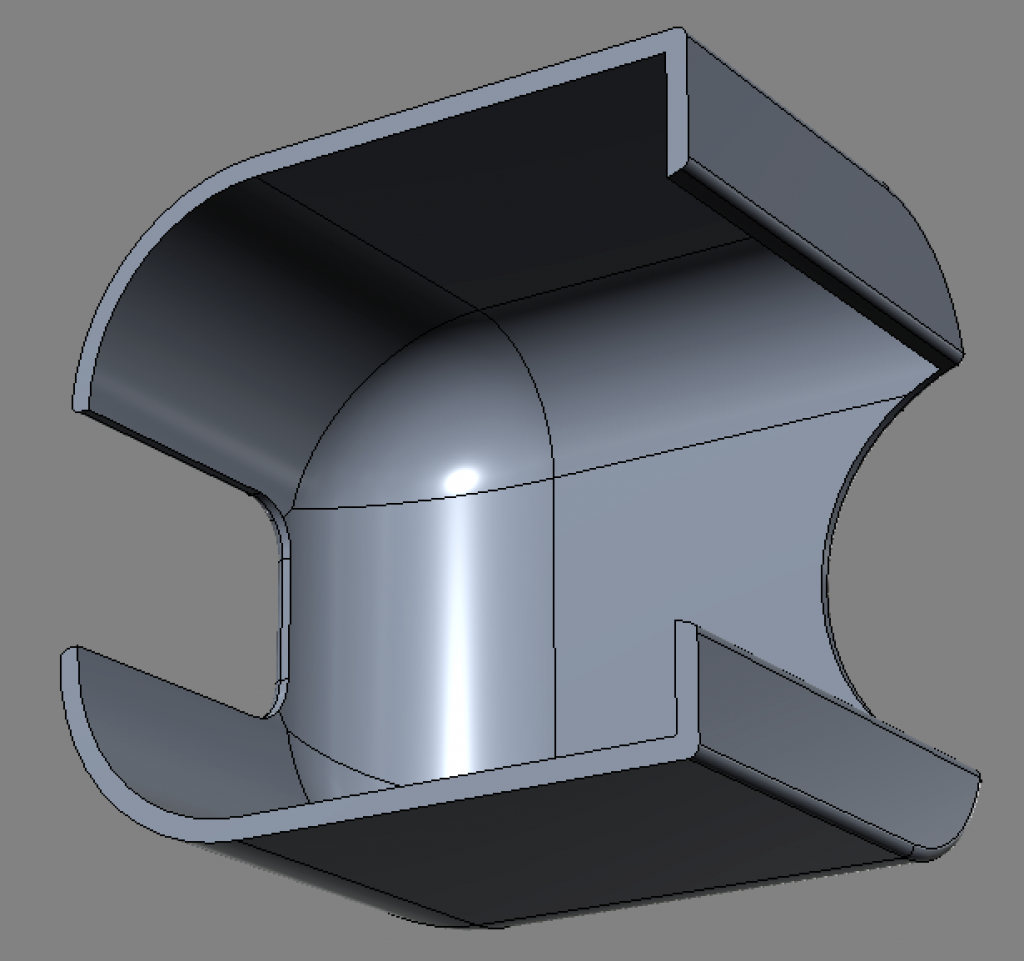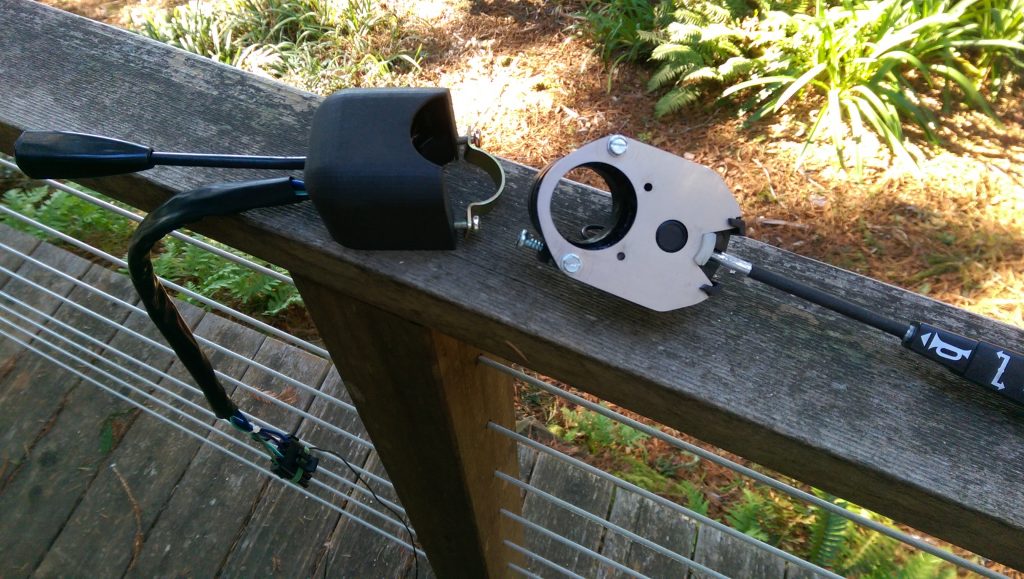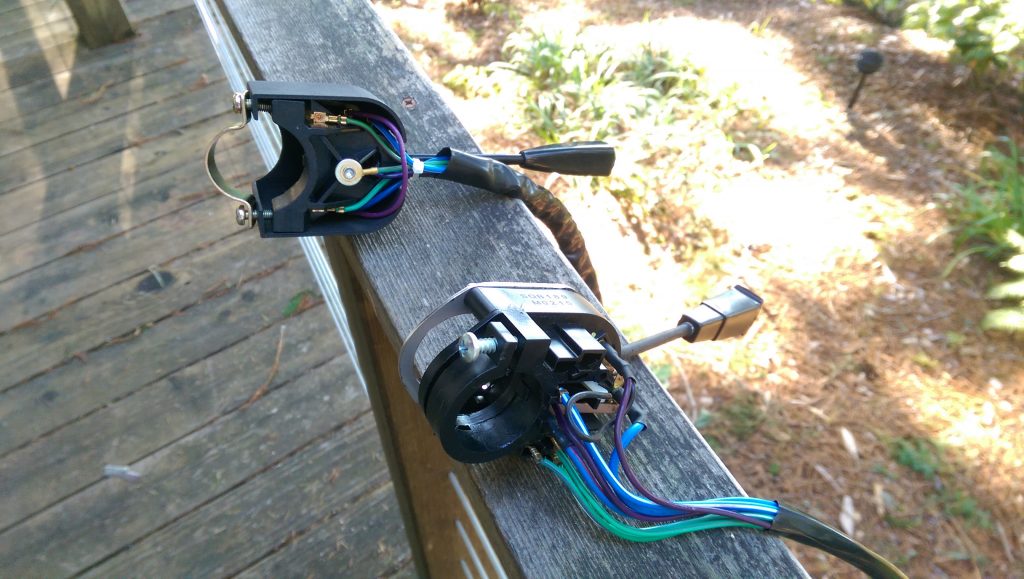The donor bike is fuel injected, and in 2003 they had an in-tank fuel pump arrangement (1).
In-tank has a number of advantages, the pump is surrounded by liquid so it can stay cooler, it has an integral fuel pressure regulator so no return line, it’s got an integrated screen filter, and fuel-low light sensor.
So, the decision was to plumb this entirely externally, lose the fuel level sensor, and add an external regulator (what could go wrong??) – or, mount the pump in the tank of the trike which involves cutting a huge hole in the side of an other wise sealed fuel tank, and trying to get a pump to seal on diamond-plate aluminum.
We’re going in-tank.
First step, a bit of CAD/CAM and some CNC work produced a “nut plate”, or a plate to put behind the opening. This will have matching holes, and be threaded to give the bolts a flat surface to clamp against, and give the bolts enough thread to torque. Metal is 6061-T6.
Then, using this as a template, cut a big hole in the side of the tank. Sorry, no photos of that step. Then, with a grinder, flatten down the diamonds to give a flat surface facing the pump. That, plus some RTV and a new gasket should do it.
Et voila, the finished article – and this has fuel in it, sitting outside on a hot day. If it’s not leaking now, it’s not going to leak for quite some time.

